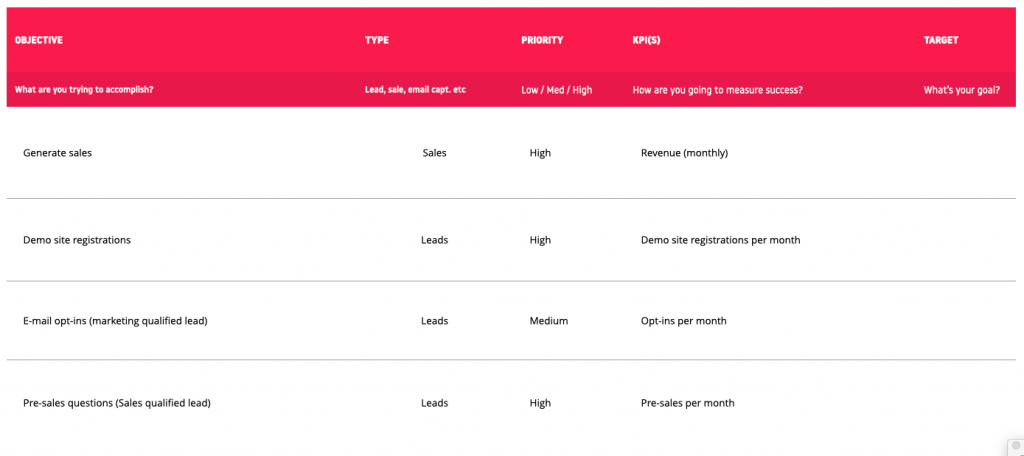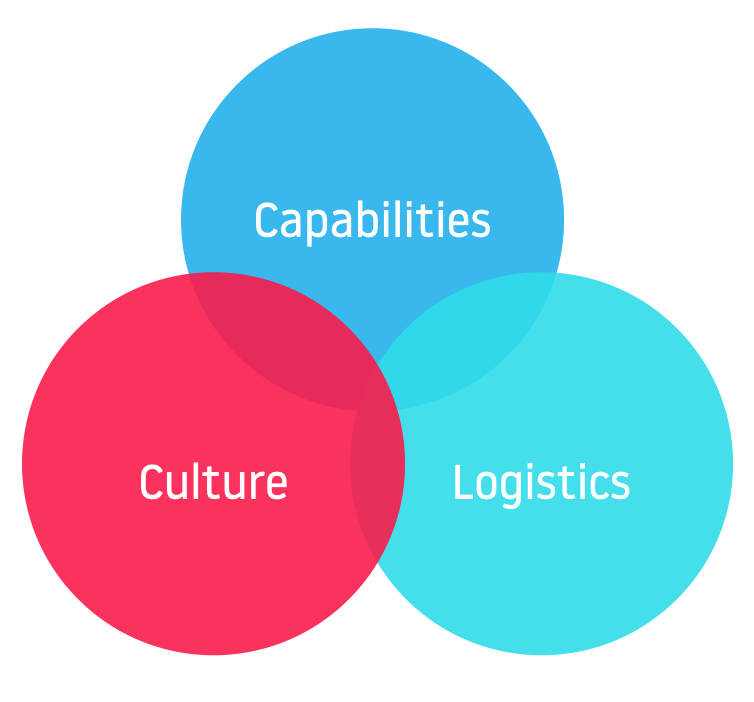- Web Design
- Website Redesign
- Updated 06/11/2025
How to hire a web design company
Hiring a web design company can feel daunting. For example, searching “Web Design Company” in Google returns over 7 billion results. While not all of those webpages are actual companies you could hire, there are lots of companies to choose from. And it’s also great to get a local web designer as communication is so much better and they will have a better understanding of what you need.

How do you find the best company for your needs?
Like many things in business, the answer is a clearly defined system and process.
Today we’ll discuss that process and how to find a company you’ll be overjoyed to work with.
It starts by creating a clear definition of what you need.
Defining your project
You won’t have success identifying who to hire if you’re not sure what you need done. The specifics of your project will determine what type of company will be a best fit.
Your first step will be writing a detailed scope of work (sometimes also called an RFP.) This will focus your search and improve communication with the companies you contact.
Let’s briefly cover what typically is in a scope of work.
Project Summary
The scope of work should open with a description of the current situation and why you’re looking for help. This communicates your needs and allows web design companies to make specific recommendations.
For example, you might describe a goal to increase brand awareness but the old, dated website is preventing you from making progress. You don’t have the in-house expertise and want guidance from a team of experts.
Project Objectives
Closely related to the project summary are the business objectives. These are the tangible outcomes you’re hoping to get from the investment. Ideally these would be written in the SMART format, i.e:
- Specific
- Measurable
- Attainable
- Relevant
- Time bound

Some examples might be:
- Increasing website leads by 10% in the next six months
- Increasing eCommerce revenue by 25% this year
- Reducing pre-sales questions by 25% this quarter
Business objectives often indicate when you need to hire a specialist. If one of your goals is to increase lead generation, you might specifically search for a web design company that specializes in lead gen. Alternatively, you might identify that elevating your brand perception is critical and you should focus on a branding firms that also offer web design.
Project Requirements
Now it’s time to identify all the functional requirements for the project. Functional requirements are what the capabilities the website needs to have, for example:
- Do you need to have an events calendar?
- Do you need eCommerce
- Do you want to manage content in-house?
- Do you need a project portfolio?
- What content sections will appear on the site?
Any functionality you need has to be built or assembled which will impact timing and price. The better you document the functional requirements the more accurate your quotes will be.
Again, this can also help focus your search. Based on your needs, you may need a company that has experience building custom functionality or specializes in a particular platform like WordPress.
Schedule
If you have any deadlines or timeframes you need to hit, best to identify them upfront. Companies will often adjust pricing based on accelerated schedules or could offer discounts if you’re not in a rush.
Budget
Budget is an uncomfortable but important talking point. Much like building a house, a website can expand or contract to fit your ideal budget. With higher budgets you get more “nice to haves” and lower budgets you’ll need to make some sacrifices. Being able to give companies an approximation means they can make better recommendations and can help eliminate firms that might be way above or below your ideal budget.
Just to give you some ranges for context:
- Someone doing web design part time might charge $1,000 – $2,000
- A full time freelancer might charge $3,000 – $10,000
- A small agency $10,000 – $50,000
- A medium sized agency $50,000 – $100,000
- Large agencies $100,000+
Just knowing what bucket you fit in will save you wasted time in talking to the wrong type of company for too long.
Once you’ve identified the project requirements, you can think more about your organizational needs.
Defining the organizational needs
No two companies are exactly alike (outside of the web design industry as well.) Every company has a different culture, guiding principles, brand mission, etc… this means you’re going to be more compatible with some companies and less with others.
Three companies who could deliver the same great job for a similar price, could mesh very differently with you and your team depending on their culture.
If you clearly define what type of company you’re looking for upfront, you’ll increase the likelihood of a smooth and successful project.
Let’s dig in to the reasons a web design company may or may not be the best fit.

Capabilities Fit
Let’s start with an easy-to-define requirement– capabilities.
Does the company in question have the expertise to accomplish the project requirements? The scope of work exercise will help in this area.
Review your scope of work and identify what skills are required to accomplish the project.
- Do they need to know search engine optimization?
- Maybe they need eCommerce expertise?
- Maybe you need a specific integration with your CRM?
You might need industry specific expertise, like a firm that only works with technology companies and will better understand your unique challenges.
Document each required capability for easy reference during your search.
Culture Fit
The next aspect to consider is cultural fit. Harder to quantify, but very important. You’re identifying what type of company you want to work with.
Typically, this is finding a company that shares your values.
Do they work at a similar pace? Do they have a similar level of attention to detail? If you like to be the driver, are they comfortable in that role? Inversely, maybe you want advice and don’t want to hand hold the agency the entire time.
While harder to tease out, you can typically get a sense of these characteristics by analyzing the tone, messaging, and client work that web design companies publish.
Logistical Fit
Finally it’s important that the company you select fits your logistical requirements. First, can they accomplish the project in the period of time for the budget you’ve allocated?
Second, you might work better with a local firm. A company you can meet in occasion to discuss the project and work through the details. Alternatively, you might decide the opposite, you don’t want to be limited by geography and would rather find the best match regardless of location.
Doing the research
Once you’ve defined your search criteria, it’s time to explore options. I recommend looking at 10 – 15 different possibilities. It sounds like a lot, but you should be able to quickly narrow down that list to 5 – 8 strong contenders.
In terms of where to find companies, the “scatter shot” method works pretty well. This involves multiple different ways of finding possible web design companies, including:
- Asking for recommendations from colleges
- Doing targeted Google searches, e.g. “WordPress Web Design Company”
- Finding high quality blog posts about web design written by web designers
- Browsing web design company directories
- Finding web sites you’re impressed with and learning who designed them
- Browsing web design galleries
- Searching portfolio sites like Behance
As your reviewing the companies, reference the requirements you’ve previously defined and evaluate if they’re a good fit in terms of capabilities, culture, and logistics. Anyone who isn’t a good fit, remove from the list.
Making a shortlist
Narrow your list of 5 – 8 to a top three. Sometimes this is an easy process and other times it’s harder. If you’re having trouble, I find listing writing out the criteria you’ve defined and ranking the companies on the criteria creates a more objective view at the selection process.
Reaching Out
Once you’ve identified your top three, reach out to each company and schedule a time to talk. It’s important to actually interact with the company prior to an engagement so you both of you can assess if it’s a good fit. Yes, this goes both ways. Experienced agencies know that it’s not worth taking on a project where they’re unsure of the outcome.
At this point you’ve made some assumptions about the company’s culture, capabilities, and logistics. Now it’s time to validate those assumptions.
Discuss the project details, have them explain their recommended approach, ask why they feel they’re a good fit.
With each company there are two possible outcomes — either you and the company will agree it’s a good fit, or it will be apparent it’s not a good fit. With the former, the company will prepare a proposal.
Making a decision
Once you’ve received all proposals, it’s time to make a decision. Before you decide, remember you can ask for clarification or modifications to the proposal.
Budget too high? Typically the agency can reduce the scope to fit your budget.
Not sure if the proposal entails everything you need? Schedule a follow up call and clarify.
You might feel compelled to decide based on your “gut,” but I’d advocate a scientific method.
Give each proposal and company a score from 1 – 5 on the following critera:
- How closely are they are capabilities match?
- How closely are they a cultural match?
- How closely are they a logistical match?
- How well do they understand your needs?
- How compelling is their proposed solution?
You may find that it’s worth investing a bit more to work with the company that scores higher on everything other than logistics, or you might choose to work with the company that better understands your needs even if they (or you) have to hire a separate company to fill in a capability gap.
By clearly scoring each company and proposal you can think through these compromises in a methodical way.
If you follow this approach you’ll be much more likely to find the right web design company for your project than a more ad-hoc, “from the gut,” process.
Best of luck in your project and if you need any help with your web design project please reach out!